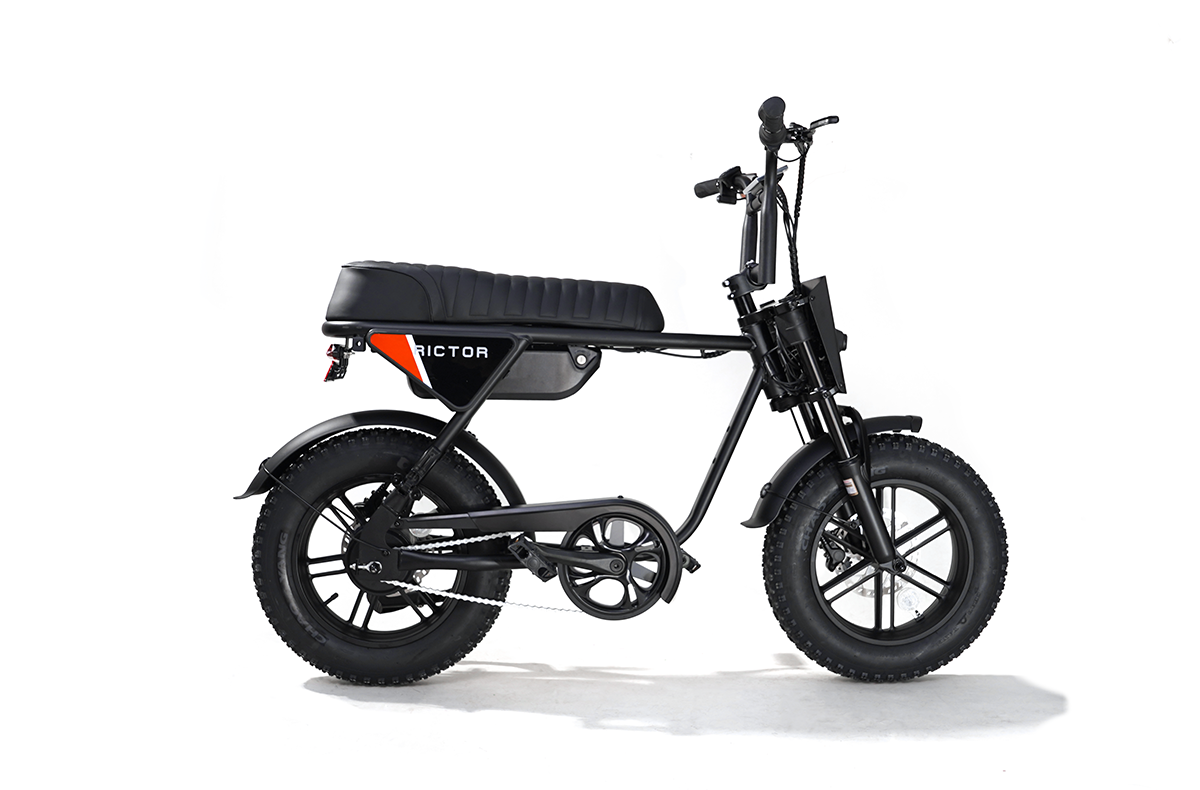
What Speeds Can You Reach on Electric Bike?
But when it comes to choosing the right electric bike, one question always stands out: How fast can it go? It’s essential for commuters looking to reduce travel time, adventure seekers tackling diverse terrains, and even casual riders who want an efficient, enjoyable ride.
Average Speed of Electric Bike
The top speed of most electric bikes typically falls between 20 to 28 miles per hour (mph), depending on the model and the class of the bike.
Class 1 and Class 2 electric bikes are generally capped at 20 mph, while Class 3 electrical bikes can reach up to 28 mph. This speed limitation is often imposed to meet regulatory standards and safety concerns.
In fact, many countries and regions have specific legal speed limits for electric bikes.
In the United States, federal law defines an ebike as a bicycle with fully operational pedals and an electric motor of less than 750 watts, with a top speed of 20 mph when powered solely by the motor.
However, Class 3 e-bikes, which can reach speeds of up to 28 mph, are permitted as long as the rider is pedaling.
In Europe, the regulations are a bit stricter. For example, in most EU countries, electrical bikes are classified under "pedelecs," which are limited to 25 kilometers per hour (about 15.5 mph) when using the motor.

If the ebike exceeds this speed or has a more powerful motor, it might be considered a different vehicle class, requiring registration, insurance, and even a driver's license.
🙌 Don’t forget, in some areas, ebikes that exceed these speed limits or have powerful motors might require a license to ride! Always check your local regulations to stay on the safe side.
🚵Choose the right electric bike at Rictor – double the batteries, double the distance!
SEE ALSO Speed Up Your Ebike: Tips to Make It Go Faster
Pedal Assist, Throttle, and Speed Modifications
In most electric bikes, you’ll find two common modes: spedal asist and throttle.
Think of pedal assist as your legs doing the work with a bit of a turbo boost, while throttle is more like hitting the gas on a scooter — just twist and go.
Pedal assist systems provide an extra boost only when the rider is pedaling. Essentially, the bike's motor amplifies the rider's pedaling effort.
The harder you pedal, the more power the motor delivers.
This setup is great for maintaining higher speeds and is particularly helpful when riding uphill or against strong winds.
With pedal assist, the rider still has to put in some effort, but the motor makes the ride much easier. In Class 3 ebikes, pedal assist can help riders reach speeds up to 28 mph when fully engaged.

Throttle mode allows the rider to accelerate without pedaling at all.
With just a twist of the throttle or push of a lever, the motor kicks in and propels the bike forward. While this mode provides effortless acceleration, it's often limited by law to a maximum speed of 20 mph.
Throttle mode gives a more scooter-like experience but generally offers less control and efficiency compared to pedal assist.
Pedal assist can potentially offer higher speeds, especially with Class 3 ebikes, while throttle is usually capped at a lower speed, around 20 mph.
Actually, the speed of an electrical bicycle isn't limited to just what you see on the specs. You could push the limits and explore "living on the edge."
Some riders wonder whether it's possible to modify their electric bikes to go faster. While tweaks to the motor or battery system can technically increase the bike’s speed—often through removing or disabling the speed limiter—these modifications come with risks.
Overclocking the motor can overheat it or shorten its lifespan, and tampering with speed settings may make the ebike illegal for public use in many areas.
Motor Types and Their Impact on Speed
Most ebikes come with either a hub motor or a mid-drive motor, and they affect how fast you can go, especially on hills.
As for the speed difference, with all other factors being equal, a mid-drive motor could help you ride about 2-5 mph faster than a hub motor, especially when tackling hills or rough terrain.
Hub motors are built into the wheel and are pretty straightforward.
They give the bike a steady push, but because they don’t work with the bike’s gears, they might struggle when you're going uphill or trying to pick up speed on rough terrain.
They're good for flat roads, but you’ll notice they slow down when the going gets tough.
Mid-drive motors are located near the pedals and work with the bike’s gears, kind of like how a regular bike works when you shift to make pedaling easier.
This setup means mid-drive motors can help you maintain higher speeds more easily, especially on hills or uneven ground. They’re just more efficient because they use the bike’s gears to get the most out of every pedal.

Fat Tire vs. Regular Electric Bikes
Do fat tire ebikes go slower than regular bikes with thinner tires? In general, fat tire e-bikes tend to be a bit slower, especially on smooth, paved roads.
The reason is simple: those big, wide tires create more rolling resistance, which means the bike has to work harder to move forward.
It’s like comparing a mountain bike to a road bike—fat tires are designed for stability and grip, not necessarily for speed.
When you're riding on rougher surfaces, like dirt trails or sandy paths, that extra traction is a game-changer.
Fat tire bikes keep a steady pace and offer a much smoother, more comfortable ride because the tires can absorb bumps better and give you more control.
In these situations, speed isn’t as important as stability, and fat tire bikes really shine.
The difference in speed between fat tire and regular ebikes isn't huge, though. Fat tire bikes might be a few miles per hour slower on flat roads compared to regular electric bicycles with thinner tires.
So, if you’re mainly riding around the city or on paved paths, a regular electric bike might be a better choice for speed.
But if you love off-road adventures or find yourself riding on tricky surfaces, a fat tire ebike will give you the control and stability you need, even if it’s not quite as fast.

Battery, Terrain, and Other Influencing Factors
How fast an ebike can go doesn’t just depend on the motor. Battery size plays a huge role.
A bigger battery means more power, which can help you hit higher speeds and ride longer distances.
But as your battery drains, you’ll notice the bike slows down since the motor can't put out as much power.
Terrain and rider weight also make a big difference. Going uphill or riding on rough ground?
That’s going to slow you down because the motor has to work harder to push through the resistance.
The same goes for heavier riders or if you’re carrying extra cargo—the more weight, the more strain on the motor, and the slower you’ll go.
On flat, smooth roads with a fully charged battery and an average-weight rider, you’ll be able to reach the bike’s top speed.
But when you start dealing with hills, rough terrain, or a draining battery, that speed will drop. It’s all about the conditions you’re riding in.
That said, while factors like battery size, terrain, and rider weight do affect speed, the impact is usually pretty small in most day-to-day riding situations.
Unless you’re dealing with really steep hills or a nearly empty battery, the difference in speed isn’t drastic.
For the average rider on normal terrain with a decent charge, you'll still be able to cruise at solid speeds without much trouble.
FAQs
What is the typical range of an electric bike on a single charge?
The range of an e-bike varies, but most models can travel anywhere from 20 to 70 miles on a single charge, depending on factors like battery capacity, terrain, rider weight, and the level of pedal assist used.
How often should I service my electric bike?
E-bikes should be serviced approximately every 6 months or every 500 miles, whichever comes first. Regular maintenance includes checking the brakes, motor, battery, and ensuring that all parts are functioning properly.
Can I ride an electric bicycle in the rain?
Yes, most e-bikes are designed to be water-resistant and can be ridden in light to moderate rain. However, it’s important to avoid deep water that could submerge the motor or battery, and always check the manufacturer’s guidelines on water resistance.



